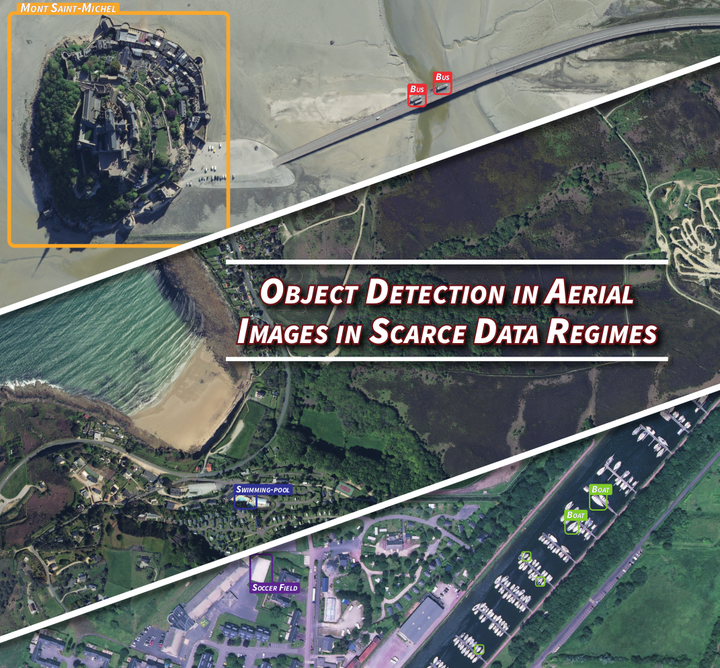
Abstract
Most contributions on Few-Shot Object Detection (FSOD) evaluate their methods on natural images only, yet the transferability of the announced performance is not guaranteed for applications on other kinds of images. We demonstrate this with an in-depth analysis of existing FSOD methods on aerial images and observed a large performance gap compared to natural images. Small objects, more numerous in aerial images, are the cause for the apparent performance gap between natural and aerial images. As a consequence, we improve FSOD performance on small objects with a carefully designed attention mechanism. In addition, we also propose a scale-adaptive box similarity criterion, that improves the training and evaluation of FSOD methods, particularly for small objects. We also contribute to generic FSOD with two distinct approaches based on metric learning and fine-tuning. Impressive results are achieved with the fine-tuning method, which encourages tackling more complex scenarios such as Cross-Domain FSOD. We conduct preliminary experiments in this direction and obtain promising results. Finally, we address the deployment of the detection models inside COSE’s systems. Detection must be done in real-time in extremely large images (more than 100 megapixels), with limited computation power. Leveraging existing optimization tools such as TensorRT, we successfully tackle this engineering challenge.